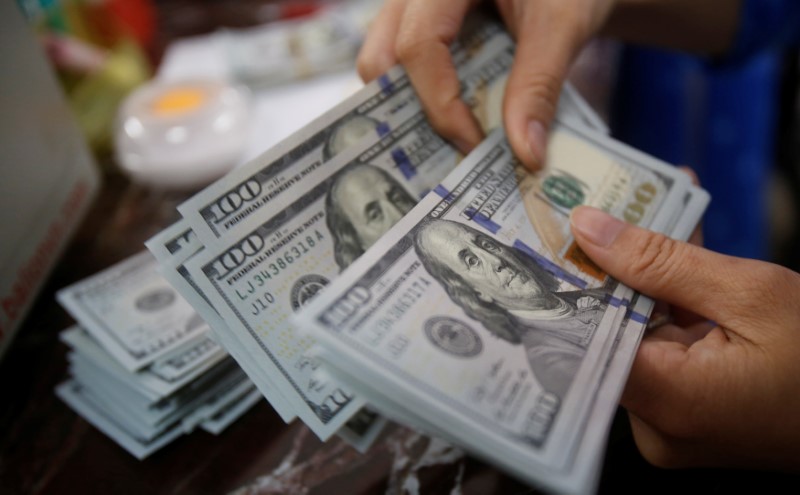By Gina Lee
Investing.com – The dollar was up, but remained below its recent highs, on Wednesday morning in Asia. Ripple effects from a crackdown in China and caution ahead of the U.S. Federal Reserve's latest policy decision gave the safe-haven U.S. currency a boost, however.
The U.S. Dollar Index that tracks the greenback against a basket of other currencies inched up 0.06% to 92.493 by 1:08 AM ET (5:08 AM GMT).
The USD/JPY pair inched up 0.03% to 109.80.
The AUD/USD pair inched down 0.09% to 0.7353 while the NZD/USD pair inched up 0.01% to 0.6955.
The USD/CNY pair inched down 0.05% to 6.5074 and the GBP/USD pair inched down 0.04% to 1.3868.
The Japanese yen rose about 0.5% against the dollar during the previous session to hit a one-week high, with the Swiss franc and euro also recording small gains. The trio held onto those gains as the Asian session opened, with the euro last trading at $1.1819, which capped gains for the U.S. currency.
The Chinese yuan fell towards a three-month low against the greenback after recording its worst day since October 2021 on Tuesday. Hong Kong’s Hang Seng Index also recorded its sharpest selloff in more than a year as concerns over a recent Chinese crackdown remained firmly in place. The crackdown on tech and other lucrative sectors also saw jitters spill over into the U.S. market on Tuesday.
The riskier Australian and New Zealand dollars also fell as investor sentiment took a hit.
“The fall in Chinese markets caused a ripple effect to global sentiment and it was a risk-off session,” Westpac strategist Imre Speizer told Reuters.
U.S. real yields also declined, with the 10-year tenor falling to a fresh record low during the previous session.
The pound surprised the market by jumping through its 20-day moving average during the previous session, with reports that the U.K. is considering opening its border giving the currency a boost.
Investors continued to focus their attention on Chinese shares’ performance on Wednesday and the Fed decision, due to be handed down later in the day.
The central bank’s unexpected hawkish turn in its previous decision in June led to a month-long rally for the greenback. It now remains to be seen whether more clues on the timeline for both asset tapering and interest rate hikes will be provided in the Fed’s latest decision.
Should mounting inflationary pressures prompt the Fed to introduce both faster than expected, it would give both U.S. rates and the dollar a boost. However, another hawkish surprise is unlikely, with investors more likely on the lookout for any shifts in tone or emphasis, said Westpac’s Speizer.
“They’ve already said they’re talking about tapering and they’ll say that again. They’ve already said transitory inflation and they’ll say that again... it’ll be subtle changes in the language that causes the reaction,” he added.
